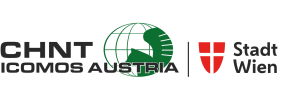Cristina Mosconi
My educational background is in Classical Archaeology, with a Master degree in Archaeology for the Roman provinces at the University of Milan (Italy). During and after graduation, I have been trained as a field archaeologist in Italy, where I grew an interest towards the application of digital technologies, in particular for the interpretation and dissemination of fieldwork results.
This has led me to pursue a Master degree in Archaeology for Screen Media at the University of Bristol (UK). There, I received extensive training in various methods and tools related to new technology applied to post excavation, such as GIS, Image Based Modelling, 3D modelling, alongside to techniques of video productions. During my time on the MA, I have also worked as part of the social media team on the Berkeley Dig field school. As part of my practice-based dissertation project, I developed a prototype mobile application of a GPS audio tour for the Neolithic sites of the Rollright Stones (Oxfordshire, UK).
Following my MA, I won a REACT Hub collaborative PhD award with University of Exeter (Art History and Visual Culture) and Calvium (Bristol based app developer company). I am currently completing my doctorate project, in which I examine how digital approaches and locative media have unlocked the potential for site-specific narratives and history delivered in the urban realm in direct dialogue with extant sites and objects. In 2018, I have been granted a Getty foundation scholarship to participate at ‘Advanced Topics in Digital Art History: 3D and (Geo)Spatial Networks’ workshop for the ‘Visualizing Venice’ program. This two-year program aims at supporting interdisciplinary teams focused on the hard questions of Digital Art History as a discipline, with special attention to projects focused on the intersection of mapping and modeling, and those thematised around Visualizing Cities. I am part of the team of ‘Firenze Scomparsa’, which aims to develop a framework for geo-locative visualization of Florentine historic buildings and artworks. A digital platform will integrate reconstructed historical settings within a geo-located smartphone app, so that the 3D-visualizations can be experienced in their original site; in their ‘virtually reinstated’ context within museum galleries; and remotely, via a database with primary material underpinning our work.
Since November 2018, I have joined the Centre for Simulation, Analytics and Modelling (University of Exeter Business School), where I am currently working as post-doctoral research assistant for the EU funded project ‘Interreg France (Channel) England project Vista AR’. The project aims at developing an understanding of visitor experiences and creating a range of interpretative digital solutions for a number of tourist attractions in the South of England and the North of France, with the aim of making AR/VR available for a lesser cost to more heritage sites, eventually helping them increasing the number of visitors by tailoring their digitalisation to their business models. As curator of the Visitor Experience Design, I am supporting the development and implementation of different digital devices (VR, AR mobile applications, and touch screens) to create new visitor experiences for several sites (Exeter Cathedral, the mining site of Botallack, National Trust Tin Coast, and South West Coastal Path in the UK).
My first participation at CHNT dates back to 2017, when my MA ‘Rollright App’ has been awarded the ‘Special App Award for Young Researchers’. Since then, I have been participating at CHNT in quality of session chair and as member of CHNT Reviewer College.

